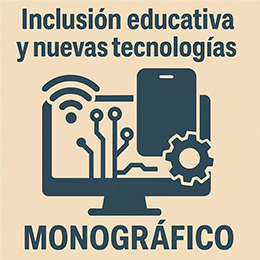Project based learning: method for designing activities
DOI:
https://doi.org/10.51302/tce.2018.194Keywords:
project based learning (PBL), educational activities design, information and communication technologies (ICT)Abstract
The Bologna Declaration was the starting point for the construction of the European Higher Education Area (EHEA). The guidelines arising from the Bologna Declaration (and subsequent) include: learning through competences, student-centered teaching and active learning. Project based learning (PBL) has a special relevance among active learning methodologies. However, the implementation of PBL has a moderate success in Spain. In recent decades a number of initiatives have been carried out, but in most cases they are restricted to individual subjects with limited scope in the curriculum. This is due in part to this methodology entails some difficulties.
This work describes a method to design educational activities through PBL. The method is aimed at teachers who are starting to use this methodology without prior training, so that the method guides them in the use of fundamental principles and good educational practices related to PBL. To strengthen this method, we have designed and implemented an ICT (information and communication technologies) tool, so that it helps teachers to design a learning activity following this methodology.
Downloads
References
Albanese, M. A. y Mitchell, S. (1993). Problem-based learning: a review of literature on its outcomes and implementation issues. Academic Medicine, 68, 52-81.
Barge, S. (2010). Principles of Problem and Project Based Learning. The Aalborg Model. Recuperado de https://goo.gl/tF3A8w (consultado el 26 de noviembre de 2017).
Barret, T. (2005). What is problem-based learning. En G. O´Neill, S. Moore y B. McMullin (Eds.), Emerging Issues in the Practice of University Learning and Teaching. Dublin: AISHE.
Barrows, H. S. (1996). Problem-based learning in medicine and beyond: a brief overview. En L. Wilkerson y W. H. Gijselaers (Eds.), Bringing Problem-Based Learning to Higher Education: Theory and Practice (núm. 68, pp. 3-12). San Francisco: Joseey-Bass, New Directions for Teaching and Learning.
Barrows, H. S. y Tamblyn, R. (1980). Problem-Based Learning: An Approach to Medical Education. New York: Springer.
BIE (2017). Buck Institute for Education. Recuperado de www.bie.org (consultado el 26 de noviembre de 2017).
CDIO (2017). The CDIO Initiative. Recuperado de http://www.cdio.org/ (consultado el 26 de noviembre de 2017).
Edutopia (2017). Practical PBL Series: Design an Instructional Unit in Seven Phases. Recuperado de http://www.edutopia.org/blog/practical-pbl-design-amber-graeber (consultado el 26 de noviembre de 2017).
Farnsworth, C. (1994). Using computer simulations in problem-based learning. En M. Orey (Ed.). Proceedings of the Thirty-Fifth ADCIS Conference (pp. 137- 140). Nashville, TN: Omni Press.
Graaff, E. de y Kolmos, A. (2003). Characteristics of problem-based learning. International Journal of Engineering Education, 19(5), 657-662.
Graaff, E. de y Kolmos, A. (2007). History of problem-based and project-based learning. En E. de Graaff y A. Kolmos (Eds.), Management of Change: Implementation of Problem-Based and Project-Based Learning in Engineering. Roterdam: Sense Publisher.
Hammond, M. (2013). Problem-based learning in the engineering curriculum-Is it suitable for first year undergraduates? Inspiring Academic Practice, 1(1). Recuperado de goo.gl/Lw1LGd (consultado el 26 de noviembre de 2017).
Hoffman, B. y Ritchie, D. (1997). Using multimedia to overcome the problem with problem based learning. Instructional Science, 25(2), 97-115.
Jonassen, D. H. (1997). Instructional design models for well-structured and ill-structured problem-solving learning outcomes. ETR&D, 45(1), 65-69.
Jonassen, D. (2011). Supporting problem solving in PBL. Interdisciplinary Journal of Problem-Based Learning, 5(2), 95-119.
Keller, J. M. (1983). Motivational design of instruction. En C. M. Reigeluth (Ed.) Instructional-Design Theories and Models (pp. 383-434). Hillsdale New Jersey, London: Lawrence ErlBaum Associates, Inc., Publishers.
Kolmos, A. (2012). Changing the curriculum to problem-based and project-based learning. En K. M. Yusof, N. A. Azli, A. M. Kosnin, S. K. Syed Yusof e Y. M. Yusof (Eds.), Outcome-Based Science, Technology, Engineering, and Mathematics Education: Innovative Practices (pp. 50-61). IGI global.
Kolmos, A. (2013). Problem –and project– based learning in a global perspective: community bulding or certification? En L. Krogh y A. Aarup Jensen (Eds.), Visions Challenges and Strategies (pp. 47-66). Aalborg University Press.
Kolmos, A., Graaff, E. de y Du, X. (2009). Diversity of PBL-PBL learning principles and models. En X. Du, E. de Graaff y A. Kolmos (Eds.), Research on PBL Practice in Engineering Education (pp. 1-7). Rotterdam, The Netherlands: Sense Publishers.
Kolmos, A., Hadgraft, R. G. y Holgaard, J. E. (2015). Response strategies for curriculum change in engineering. International Journal of Technology and Design Education, 25(4), 1-21.
Lane, J. L. (2007). Designing for Problem-based Learning: Issues to consider. Recuperado de (consultado el 26 de noviembre de 2017).
Namsoo, S. H. (1998). The Relationship Between Well- Structured and Ill-Structured Problem Solving in Multimedia Simulation (Thesis in Instructional Systems). The Pennsylvania State University.
Oakey, J. (2002). Project-Based and Problem-Based: The Same or Different? Recuperado de http://edu-techwiki.unige.ch/en/Project-Based_and_Problem-Based:_The_same_or_different%3F (consultado el 26 de noviembre de 2017).
Prince, M. J. y Felder, M. (2006). Inductive teaching and learning methods: definitions, comparisions and research bases. Journal of Engineering Education, 95(2), 123-138.
Rué, J. (2009). El aprendizaje autónomo en educación superior. España: Narcea, SA de Ediciones.
Savin-Baden, M. (2007). Challenging models and perspectives of problem-based learning. En E. de Graaff y A. Kolmos (Eds.), Management of Change. Rotterdam/Taipei: Sense Publishers.
TREE (2007). Problem Based Learning. Teaching and Research in Engineering in Europe, Special Interest Group B5 «Problem Based and Project Oriented Learning». SIG Leader: Selahattin Kuru, Isik University. Recuperado de https://lirias.kuleuven.be/bitstream/123456789/239445/2/b5.pdf&gathStatIcon=true (consultado el 26 de noviembre de 2017).
Downloads
Published
How to Cite
Issue
Section
License
Copyright (c) 2018 Javier García Martín, Jorge Enrique Pérez Martínez

This work is licensed under a Creative Commons Attribution-NonCommercial-NoDerivatives 4.0 International License.


























